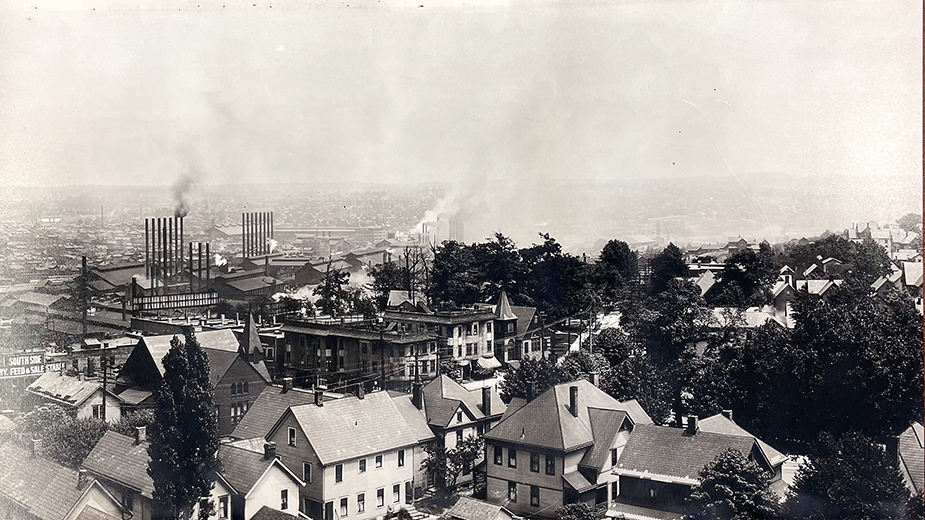By Edward P. Noga
YOUNGSTOWN, Ohio – Dan O’Horo Sr. told me years ago as we stood on Pike Street, “Someday there will be houses on that hill.”
Pike is a mostly unused street that runs from the bottom of Oak Hill Avenue to the Market Street Bridge.
The locally owned Renner Brewery operated on Pike Street from the post-Civil War era to the early 1960s, nearly 100 years.
As you drive down Oak Hill Avenue toward downtown Youngstown, Pike Street is on the right-hand side of Oak Hill across the street from the Pepsi-Cola warehouse.
Dan Sr. grew up on the South Side of Youngstown and graduated from Ursuline High School in 1952. His uncle started the A.P. O’Horo Co. in 1955. Today that company is on Belmont Avenue.
The O’Horo family had a history in the construction business and operated several construction companies that date back to the early 1900s. O’Horo’s connection to the company goes back to his high school and college years.
The vintage photo that accompanies this column shows an area looking northeast toward the Mahoning River. More definitively, the photo looks at the roofs of a neighborhood just above the Market Street Viaduct. There was no Market Street Bridge yet.
A very close look at the photo shows one building that is still there. In the middle of the photo sits a small church with a spire. That building still stands near where Market Street and Woodland Avenue intersect.

Back in 1910, as the local mills lined the river from Warren to Girard, then continued to Youngstown, Campbell and Struthers, neighborhoods sprouted near the mills (job sites). Remember, cars were not as prevalent then. Mass transit brought many to work and got them home.
Neighborhoods were so densely inhabited that houses were often constructed behind houses.
It was common to have an address like 200 Kenmore Ave. and another address 200½ Kenmore, the latter house sitting just behind the curb address.
As time marched on, the streets and neighborhoods took various shapes. Then cars began to be more attainable and people moved further out for more land. Many a sociologist over the years has studied the growth and movement of American neighborhoods.
When I was 7 years old in 1956, President Eisenhower signed legislation that began the interstate highway system that dramatically transformed the landscape of our country. As the late commentator Paul Harvey stated, “Now you know the rest of the story.”
Going back to the picture from 1910, the Mahoning River, its banks and adjacent land became the neighborhoods for the growing number of immigrants attracted by jobs and a better way of life.
With rivers being a sign of life, it’s no wonder that houses of all types and shapes and sizes are built near oceans, lakes and rivers. Some planned communities are built around a lake. We humans have a love affair with water.
More and more, local governments look to attract contractors and builders to the waters inside their jurisdictions. And we know that it is happening everywhere.
Locally, those planners who look down the road (or river), see the potential. The repurposing of such property ties in with economic development, repopulation and better land strategy.
In recent years, talk has started in Campbell, Lowellville and Struthers about riverfront housing and the recreational use of our river.
Similar talks and strategies are surfacing in many communities such as Warren, Youngstown and East Liverpool as the development potential of rivers keeps showing up on agendas at all levels.
Yes, when Dan O’Horo Sr. said, “Someday there will be houses on those hills,” his generation had memories to back up his prediction. His generation has memories of what it was like and now there are those who dream of what it can be.
As we know, history often repeats itself. Dan, someday is going to be tomorrow!
